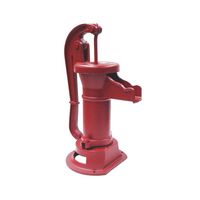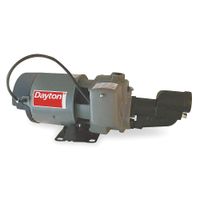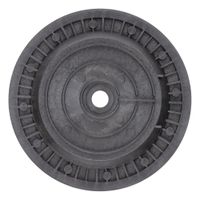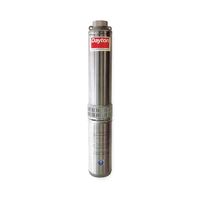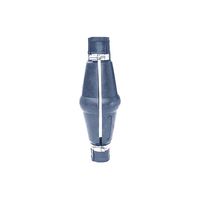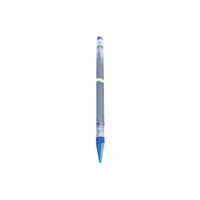Call +(254) 703 030 000 / 751 483 999 / 721 704 777
.....Read More
Frequently Asked Questions
How do I choose the right well pump for my home?
1. **Determine Water Needs**: Calculate your household's water demand. Consider the number of people, bathrooms, appliances, and irrigation needs. A typical household requires 100-120 gallons per person per day.
2. **Identify Well Depth**: Measure the depth of your well. Shallow wells (less than 25 feet) typically use jet pumps, while deeper wells (25-400 feet) require submersible pumps.
3. **Pump Type**:
- **Jet Pumps**: Suitable for shallow wells. They are installed above ground and use suction to draw water.
- **Submersible Pumps**: Ideal for deep wells. They are installed underwater and push water to the surface.
4. **Pump Capacity**: Choose a pump with the right flow rate, measured in gallons per minute (GPM). A typical home needs 8-12 GPM. Ensure the pump can handle peak demand.
5. **Pump Power**: Consider the horsepower (HP) needed. More HP means more power and higher water pressure, but also higher energy consumption. Match the pump's power to your well depth and water needs.
6. **Pressure Tank**: Ensure compatibility with your pump. The tank should be large enough to minimize pump cycling, which extends pump life.
7. **Material and Durability**: Choose pumps made from corrosion-resistant materials like stainless steel, especially if your water has high mineral content.
8. **Energy Efficiency**: Look for energy-efficient models to reduce electricity costs.
9. **Brand and Warranty**: Opt for reputable brands with good customer reviews and a solid warranty for peace of mind.
10. **Professional Consultation**: Consult with a well professional to ensure the pump is suitable for your specific well conditions and local regulations.
What are the signs that my well pump is failing?
Signs that your well pump may be failing include:
1. **No Water or Low Water Pressure**: A sudden lack of water or a noticeable drop in water pressure can indicate pump issues.
2. **Air Spitting from Faucets**: Air coming out of faucets suggests that the pump might be drawing air due to a drop in water level or a leak in the system.
3. **High Electric Bills**: A failing pump may run continuously or more frequently, leading to increased electricity usage.
4. **Strange Noises**: Unusual sounds such as grinding, clicking, or humming from the pump or pressure tank can signal mechanical problems.
5. **Dirty or Murky Water**: Sediment or dirt in your water can indicate that the pump is drawing from the bottom of the well, possibly due to a drop in water level or pump failure.
6. **Frequent Cycling**: If the pump turns on and off more frequently than usual, it could be due to a pressure tank issue or a failing pump.
7. **Water Pressure Fluctuations**: Inconsistent water pressure can be a sign of a malfunctioning pump or pressure tank.
8. **Pump Won't Start**: If the pump doesn't start at all, it could be due to electrical issues, a faulty pressure switch, or a burned-out motor.
9. **Visible Leaks**: Water leaks around the pump or pressure tank can indicate a failing pump or plumbing issues.
10. **Age of the Pump**: Most well pumps last about 8-15 years. If your pump is within this age range, it might be nearing the end of its lifespan.
If you notice any of these signs, it's advisable to consult a professional to diagnose and address the issue promptly.
How often should I have my well system inspected?
You should have your well system inspected at least once a year. Regular inspections are crucial to ensure the safety and efficiency of your water supply. During an inspection, a professional will check the well's mechanical components, water quality, and overall system integrity. This includes examining the pump, pressure tank, and any filtration or treatment systems you may have in place.
Annual inspections help identify potential issues early, such as mechanical failures, contamination, or changes in water quality, which can prevent costly repairs and health risks. Additionally, if you notice any changes in water taste, odor, or pressure, or if there are any signs of contamination like cloudy water, you should have your well inspected immediately, regardless of the last inspection date.
Regular testing of the water quality is also recommended, typically for bacteria, nitrates, and any local contaminants of concern. This is especially important if your well is near agricultural areas, industrial sites, or if there have been recent environmental changes or natural disasters in your area.
In summary, an annual inspection is a minimum requirement, but more frequent checks may be necessary depending on your specific circumstances and any changes in water quality or system performance.
What is the average lifespan of a well pump?
The average lifespan of a well pump typically ranges from 8 to 15 years. This lifespan can vary significantly based on several factors, including the type of pump, the quality of installation, the level of maintenance, and the conditions of the water source.
Submersible pumps, which are installed deep within the well, generally have a longer lifespan, often reaching up to 15 years or more, due to their design and the fact that they are protected from external elements. Jet pumps, which are installed above ground, tend to have a shorter lifespan, usually around 8 to 10 years, as they are more exposed to environmental factors.
Regular maintenance plays a crucial role in extending the life of a well pump. This includes routine inspections, checking for leaks, ensuring the pump is not running dry, and monitoring the pressure switch and tank. Proper installation by a qualified professional also ensures that the pump operates efficiently and reduces the risk of premature failure.
The quality of the water being pumped can also impact the pump's lifespan. Water with high levels of sediment, minerals, or corrosive elements can cause wear and tear on the pump components, leading to a reduced lifespan. Installing a filtration system can help mitigate these effects.
Additionally, the frequency and duration of pump usage affect its longevity. Pumps that are used more frequently or for extended periods may experience more wear and tear, potentially shortening their lifespan.
In summary, while the average lifespan of a well pump is 8 to 15 years, proper maintenance, quality installation, and favorable water conditions can help maximize its operational life.
How do I increase water pressure from my well system?
To increase water pressure from your well system, consider the following steps:
1. **Check the Pressure Tank**: Ensure the pressure tank is functioning correctly. The tank should be set to a pressure that is 2 psi below the cut-in pressure of the pump. Adjust the air pressure in the tank if necessary.
2. **Adjust Pressure Switch Settings**: Locate the pressure switch, which controls the pump's cut-in and cut-out pressure. Increase the cut-in and cut-out settings, but ensure they remain within the pump's capacity to avoid damage.
3. **Inspect for Leaks**: Examine the entire system for leaks, including pipes, fittings, and the pressure tank. Repair any leaks to prevent pressure loss.
4. **Clean or Replace Clogged Pipes**: Sediment buildup can reduce water flow. Clean or replace any clogged pipes to improve water pressure.
5. **Install a Constant Pressure System**: Consider installing a constant pressure valve or a variable speed pump. These systems maintain consistent water pressure by adjusting the pump speed based on demand.
6. **Upgrade the Pump**: If the current pump is insufficient, upgrading to a more powerful pump can increase water pressure. Ensure the new pump is compatible with your well system.
7. **Check the Well**: Ensure the well is not running dry or has a reduced water level. If so, consult a professional to address the issue.
8. **Consult a Professional**: If the problem persists, consult a well system professional to diagnose and resolve complex issues.
Implementing these steps can help increase water pressure in your well system effectively.
What maintenance is required for a well water system?
Regular maintenance of a well water system is crucial to ensure safe and reliable water supply. Key maintenance tasks include:
1. **Annual Inspection**: Hire a professional to inspect the well, pump, and pressure tank annually. They should check for mechanical issues, water level, and overall system integrity.
2. **Water Testing**: Test the water annually for contaminants like bacteria, nitrates, and other local concerns. More frequent testing may be necessary if there are changes in taste, odor, or appearance.
3. **Well Cap and Casing**: Ensure the well cap is secure and in good condition to prevent contamination. Inspect the casing for cracks or damage.
4. **Pump Maintenance**: Regularly check the pump for signs of wear or damage. Listen for unusual noises and monitor for changes in water pressure or flow rate.
5. **Pressure Tank**: Check the pressure tank for proper pressure settings and signs of waterlogging. Ensure the air charge is correct to prevent pump cycling issues.
6. **Water Softener and Filtration Systems**: If installed, maintain these systems according to manufacturer guidelines. Replace filters and add salt or other necessary materials as required.
7. **Surrounding Area**: Keep the area around the well clean and free of debris. Ensure proper drainage to prevent surface water from pooling near the well.
8. **Record Keeping**: Maintain detailed records of all maintenance activities, inspections, and water test results. This helps track the system's health over time.
9. **Emergency Preparedness**: Have a plan for power outages or pump failures, including backup power solutions or alternative water sources.
10. **Professional Servicing**: Engage professionals for any repairs or complex maintenance tasks to ensure safety and compliance with local regulations.
How do I troubleshoot a well pump that won't start?
1. **Check Power Supply**: Ensure the pump is receiving power. Verify that the circuit breaker is not tripped and the fuse is not blown. Reset the breaker or replace the fuse if necessary.
2. **Inspect Pressure Switch**: Examine the pressure switch for any visible damage or debris. Ensure it is set correctly and not stuck. Clean or replace if needed.
3. **Examine Control Box**: If your pump has a control box, inspect it for burnt components or loose connections. Replace any damaged parts.
4. **Test Voltage**: Use a multimeter to check the voltage at the pressure switch and the pump. Ensure it matches the pump's requirements.
5. **Inspect Wiring**: Look for any loose, corroded, or damaged wires. Tighten connections and replace any faulty wiring.
6. **Check Capacitor**: If the pump has a capacitor, test it with a multimeter. Replace it if it’s not holding a charge.
7. **Examine Pump Motor**: Listen for unusual noises or vibrations. If the motor is hot, it may be overloaded or have a mechanical issue.
8. **Inspect Pump Impeller**: If accessible, check the impeller for clogs or damage. Clean or replace as necessary.
9. **Check for Airlock**: Ensure there is no air trapped in the system, which can prevent the pump from priming.
10. **Test Pressure Tank**: Ensure the pressure tank is not waterlogged. Check the air pressure with a tire gauge and adjust if necessary.
11. **Consult a Professional**: If the issue persists, contact a professional well pump technician for further diagnosis and repair.
What are the differences between submersible and jet pumps?
Submersible pumps and jet pumps are both used to move water, but they operate differently and are suited for different applications.
Submersible Pumps:
1. **Location**: Submersible pumps are installed underwater, typically in wells or sumps.
2. **Design**: They are sealed units with the motor and pump combined, preventing water from entering the motor.
3. **Operation**: These pumps push water to the surface, making them efficient for deep wells.
4. **Efficiency**: Submersible pumps are generally more energy-efficient as they avoid cavitation issues and use less energy to move water.
5. **Noise**: They operate quietly since they are submerged.
6. **Maintenance**: Maintenance can be challenging as the pump must be removed from the water for repairs.
7. **Applications**: Ideal for deep wells, sewage systems, and underwater applications.
Jet Pumps:
1. **Location**: Jet pumps are installed above ground, typically near the water source.
2. **Design**: They consist of a motor-driven impeller and a jet assembly, which creates a vacuum to draw water.
3. **Operation**: Jet pumps pull water from the source, making them suitable for shallow wells.
4. **Efficiency**: They are less efficient for deep wells due to energy loss in lifting water.
5. **Noise**: Jet pumps can be noisy as they operate above ground.
6. **Maintenance**: Easier to maintain since they are accessible and not submerged.
7. **Applications**: Suitable for shallow wells, boosting water pressure, and irrigation systems.
In summary, submersible pumps are better for deep water applications due to their efficiency and quiet operation, while jet pumps are more accessible and suitable for shallow water sources.
How do I prevent my well from freezing in winter?
To prevent your well from freezing in winter, follow these steps:
1. **Insulate the Wellhead**: Use insulating materials like foam pipe insulation or heat tape around the wellhead and exposed pipes. Ensure the insulation is waterproof to prevent moisture damage.
2. **Install a Well House**: Build a small, insulated structure around the wellhead. This can help maintain a stable temperature and protect against wind chill.
3. **Use Heat Lamps or Heaters**: Place a heat lamp or a small space heater inside the well house. Ensure it is safe for outdoor use and does not pose a fire hazard.
4. **Install a Frost-Free Hydrant**: If your well is connected to outdoor faucets, consider installing frost-free hydrants. These are designed to prevent freezing by draining water back into the ground when not in use.
5. **Keep Water Moving**: Running water is less likely to freeze. During extremely cold periods, allow a small trickle of water to flow through the system to keep it moving.
6. **Check and Maintain the Pump**: Ensure the well pump is in good working condition. A malfunctioning pump can lead to water stagnation, increasing the risk of freezing.
7. **Seal Cracks and Openings**: Inspect the well house and surrounding area for any cracks or openings that could allow cold air to enter. Seal these with caulk or weatherstripping.
8. **Monitor Weather Conditions**: Stay informed about upcoming cold snaps and take additional precautions as needed, such as increasing insulation or temporarily increasing water flow.
9. **Professional Inspection**: Have a professional inspect your well system before winter to ensure everything is in good condition and properly insulated.
By taking these preventive measures, you can significantly reduce the risk of your well freezing during winter.
What are common causes of well water contamination?
Common causes of well water contamination include:
1. **Microbial Pathogens**: Bacteria, viruses, and parasites from human and animal waste can infiltrate well water, often due to nearby septic systems or agricultural runoff.
2. **Nitrates and Nitrites**: These compounds, often from fertilizers, septic systems, or animal waste, can leach into groundwater, posing health risks, especially to infants.
3. **Heavy Metals**: Natural deposits or industrial activities can introduce metals like lead, arsenic, and mercury into well water, leading to serious health issues.
4. **Pesticides and Herbicides**: Agricultural activities can lead to the runoff of these chemicals into groundwater, contaminating wells.
5. **Industrial Chemicals**: Solvents, petroleum products, and other industrial chemicals can seep into groundwater from spills, leaks, or improper disposal.
6. **Radionuclides**: Naturally occurring radioactive materials, such as uranium and radon, can dissolve into groundwater from surrounding rocks.
7. **Volatile Organic Compounds (VOCs)**: These are often found in industrial solvents and can contaminate groundwater through spills or leaks.
8. **Salts**: Road de-icing salts or seawater intrusion in coastal areas can increase the salinity of well water.
9. **Pharmaceuticals and Personal Care Products**: Improper disposal or agricultural runoff can introduce these substances into groundwater.
10. **Improper Well Construction or Maintenance**: Poorly constructed or maintained wells can allow contaminants to enter the water supply.
11. **Natural Disasters**: Events like floods or earthquakes can introduce contaminants into well water by disturbing the surrounding environment.
12. **Land Use Changes**: Urbanization and deforestation can alter the natural filtration of groundwater, increasing contamination risks.
